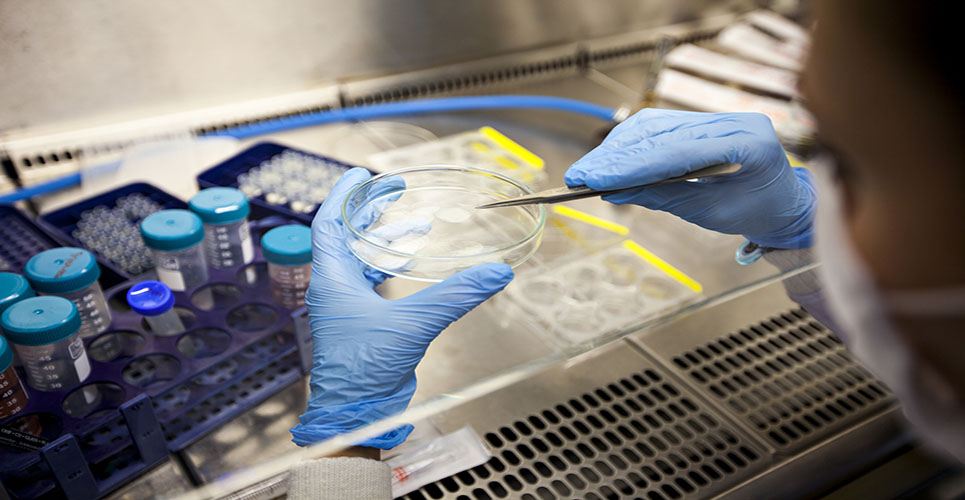Janssen R&D Ireland (Janssen) announced data from the primary endpoint of the PROTEAse Inhibitor (DRV/rtv) in mono or triple therapy in suppressed human immunodeficiency virus (HIV)-1 infected subjects (PROTEA) study, and a systematic review of 12 clinical trials. Both the study and the review examined the boosted protease inhibitor darunavir as a possible basis for future maintenance monotherapy treatment for people living with HIV. The data were presented at the HIV Drug Therapy Glasgow 2014 Congress in Scotland.
Janssen R&D Ireland (Janssen) announced data from the primary endpoint of the PROTEAse Inhibitor (DRV/rtv) in mono or triple therapy in suppressed human immunodeficiency virus (HIV)-1 infected subjects (PROTEA) study, and a systematic review of 12 clinical trials. Both the study and the review examined the boosted protease inhibitor darunavir as a possible basis for future maintenance monotherapy treatment for people living with HIV. The data were presented at the HIV Drug Therapy Glasgow 2014 Congress in Scotland.
The systematic review was based on 12 randomised trials (four studies evaluated darunavir/ritonavir [DRV/rtv] monotherapy, seven studies evaluated lopinavir/ritonavir [LPV/rtv] monotherapy and one study evaluated both DRV/rtv and LPV/rtv as monotherapies) of 2,202 patients with established HIV-1 RNA suppression comparing Protease Inhibitor (PI) monotherapy to triple therapy. (1) Results from the systematic review showed that PI monotherapy compared to triple therapy showed lower HIV suppression rates (76% versus 82%); however, after treatment re-intensification with Nucleotide Reverse Transcriptase Inhibitors (NRTIs), the suppression rates were similar between the PI monotherapy and triple therapy arms (87% versus 85%). (1) PIs are currently not licenced to be used in HIV maintenance monotherapy.
The findings from the systematic review were consistent with data from the 48-week analysis of the primary endpoint of the PROTEA study (designed to run for 96-weeks in total), which included 273 patients with established HIV-1 RNA suppression. (2) The PROTEA study compared boosted darunavir monotherapy to triple therapy, with similarly lower HIV suppression rates (86% versus 95%). However, among the subset of patients with a CD4 nadir of at least 200 cells/µL, the PROTEA study showed very high HIV suppression rates of both the PI monotherapy and the triple therapy arm (95% versus 94%). (2) The safety profile of the boosted darunavir monotherapy was in line with previous darunavir trials and there was no development of PI resistance and CD4 counts remained stable during the trial. (2)
“The efficacy shown in this systematic review and in the PROTEA study is promising for certain patient populations. Patients with a CD4 nadir of at least 200 cells/µL could potentially benefit from this treatment simplification. A better understanding of the prognostic factors for response needs further investigation,” said Christiane Moecklinghoff, MD, PhD, Medical Director, Virology, Janssen EMEA. “Our goal is to offer new and effective treatment options for people living with HIV by expanding existing treatment options and simplifying regimens. This has the potential to improve patients’ lives by supporting adherence. (3)”
Antiretroviral drugs, such as PIs, help to suppress viral replication at various stages in the viral lifecycle, but do not eliminate HIV. Standard HIV-drug therapy contains three active components: a backbone of two NRTIs, plus either a Non-Nucleoside Reverse Transcriptase Inhibitor (NNRTI), PI or Integrase Inhibitor (INI). (4)
Since the beginning of the HIV epidemic, almost 75 million people have been infected with the HIV virus. (5) It is estimated that 35 million people are currently living with HIV globally, with 2.5 million people becoming newly infected each year. (5,6)
References:
- Arribas J, Girard PM, Paton N, et al. Efficacy of PI monotherapy versus triple therapy for 2202 patients in 12 randomised trials. Abstract from Glasgow 2014, Twelfth International Congress on Drug Therapy In HIV Infection.
- Antinori A, Arribas J, Fehr J, et al. The PROTEA trial: darunavir/ritonavir with or without nucleoside analogues, for patients with HIV-1 RNA below 50 copies/mL. Abstract from Glasgow 2014, Twelfth International Congress on Drug Therapy In HIV Infection.
- World Health Organization. 9.2 Guidance on operations and service delivery: adherence to ART. Available at: http://www.who.int/hiv/pub/guidelines/arv2013/operational/adherence/en Last accessed October 2014.
- World Health Organization. HIV/AIDS, Summary of new recommendations, 2013. Available at: http://www.who.int/hiv/pub/guidelines/arv2013/intro/summarynewrecommendations.pdf?ua=1 Last accessed October 2014.
- World Health Organization. Global summary of the AIDS epidemic. Available at: http://www.who.int/gho/hiv/en/ Last accessed October 2014.
- World Health Organization. Global summary of the AIDS epidemic. Available at: http://www.who.int/hiv/data/2012_epi_core_en.png Last accessed October 2014.

